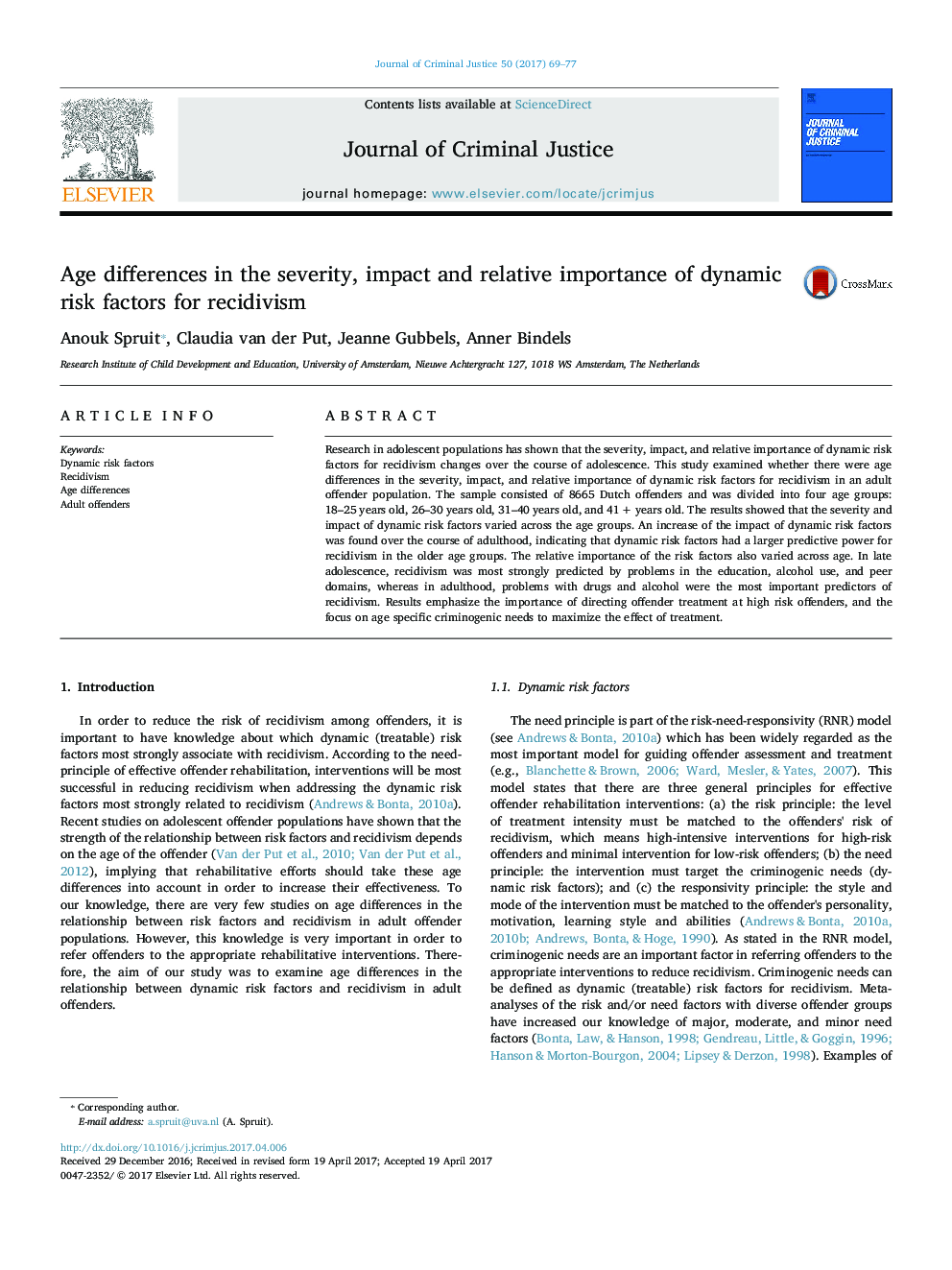| Article ID | Journal | Published Year | Pages | File Type |
|---|---|---|---|---|
| 5034325 | Journal of Criminal Justice | 2017 | 9 Pages |
Abstract
Research in adolescent populations has shown that the severity, impact, and relative importance of dynamic risk factors for recidivism changes over the course of adolescence. This study examined whether there were age differences in the severity, impact, and relative importance of dynamic risk factors for recidivism in an adult offender population. The sample consisted of 8665 Dutch offenders and was divided into four age groups: 18-25Â years old, 26-30Â years old, 31-40Â years old, and 41Â + years old. The results showed that the severity and impact of dynamic risk factors varied across the age groups. An increase of the impact of dynamic risk factors was found over the course of adulthood, indicating that dynamic risk factors had a larger predictive power for recidivism in the older age groups. The relative importance of the risk factors also varied across age. In late adolescence, recidivism was most strongly predicted by problems in the education, alcohol use, and peer domains, whereas in adulthood, problems with drugs and alcohol were the most important predictors of recidivism. Results emphasize the importance of directing offender treatment at high risk offenders, and the focus on age specific criminogenic needs to maximize the effect of treatment.
Related Topics
Social Sciences and Humanities
Psychology
Applied Psychology
Authors
Anouk Spruit, Claudia van der Put, Jeanne Gubbels, Anner Bindels,
